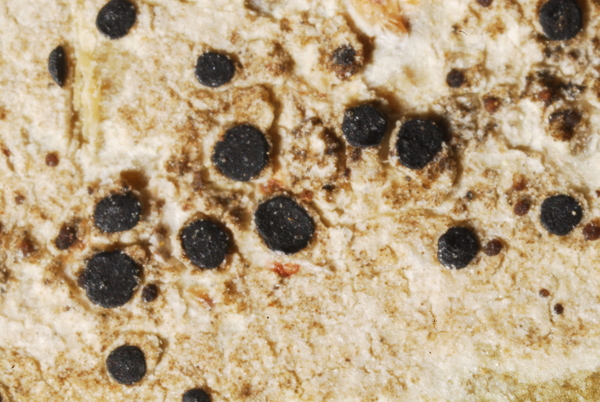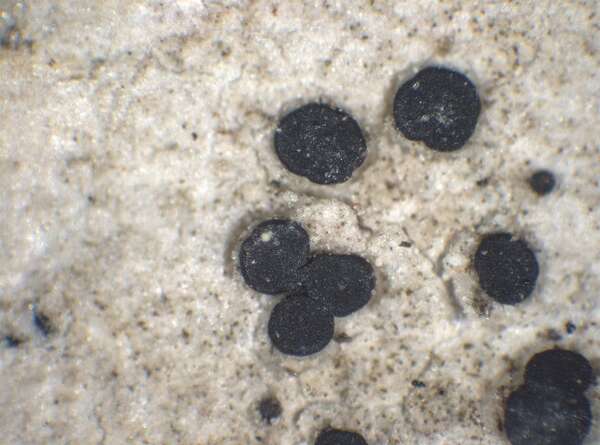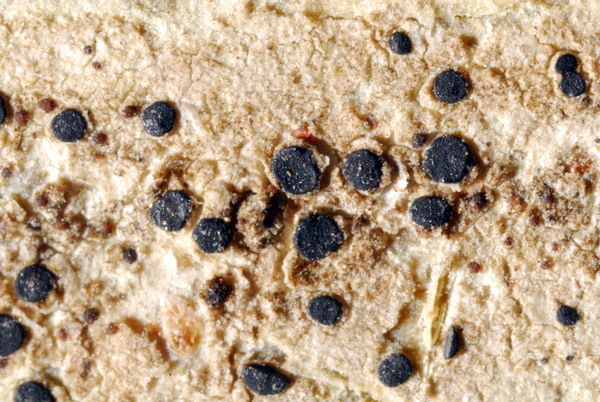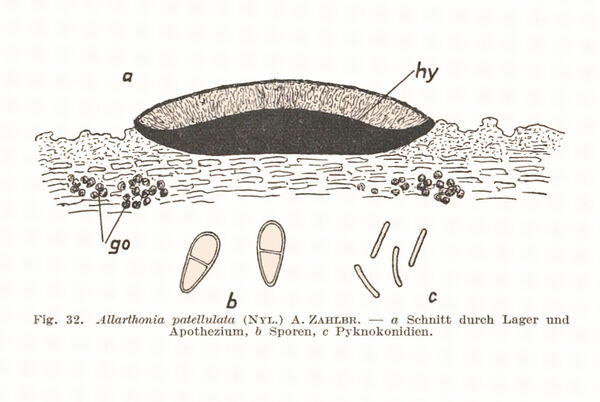Arthonia patellulata Nyl.
Bot. Not.: 95, 1853.
Synonyms: Allarthonia patellulata (Nyl.) Zahlbr.; Arthonia betuleti Nyl.; Coniangium krempelhuberi A. Massal.; Coniangium krempelhuberi var. effusum A. Massal.?
Distribution: N - Ven (Lazzarin 2000b, Lomb, Piem (Caniglia & al. 1992). C - Tosc (Putortì & al. 1999c, Loppi & al. 2002). S - Camp (Aprile & al. 2003b), Cal (Puntillo 1996).
Description: Thallus crustose, very thinly episubstratic, smooth to finely rugose, white, grey-white or yellowish, without a distinct prothallus. Apothecia arthonioid, rounded, sessile, 0.2-0.7 mm across, with a black, flat to slightly convex, epruinose disc, without a proper margin. Proper exciple poorly developed, of paraphysoid-like hyphae; epithecium grey-green to olivaceous brown, 10-15(-20) µm high, K-, the hyphal tips embedded in a brownish gel, anticlinally arranged, up to 2 µm wide, without distinct apical caps; hymenium colourless or yellowish green, not inspersed with oil droplets, 35-60 µm high, I+ reddish, K/I+ blue; paraphysoids vertically oriented, branched and anastomosing, slender, c. 1.5 µm thick, not capitate, without a brown cap; hypothecium dark brown to black, 30-80 µm high. Asci 8-spored, broadly clavate to subglobose, semi-fissitunicate, with a large apical dome, a distinct ocular chamber and a K/I+ blue ring-structure, approaching the Arthonia-type, 26-35 x 10-15 µm. Ascospores 1-septate, constricted at septum, with unequal cells (one subglobose, the other narrower and pointed), hyaline, obovate, 9-15 x 3-5 µm. Pycnidia black, sessile, c. 0.05 mm wide. Conidia bacilliform, straight or slightly curved, 3-6 x c. 1 µm. Photobiont chlorococcoid, sometimes poorly evident. Spot tests: K-, C-, KC-, P-, UV-. Chemistry: without lichen substances.Note: a cool-temperate to boreal-montane, probably circumpolar species found on smooth bark, mostly of Populus tremula. The records from Peninsular Italy require confirmation. It is included in the Italian red list of epiphytic lichens as “Vulnerable” (Nascimbene & al. 2013c).
Growth form: Crustose
Substrata: bark
Photobiont: green algae other than Trentepohlia
Reproductive strategy: mainly sexual
Pioneer species
Commonnes-rarity: (info)
Alpine belt: absent
Subalpine belt: extremely rare
Oromediterranean belt: absent
Montane belt: very rare
Submediterranean belt: absent
Padanian area: absent
Humid submediterranean belt: absent
Humid mediterranean belt: absent
Dry mediterranean belt: absent
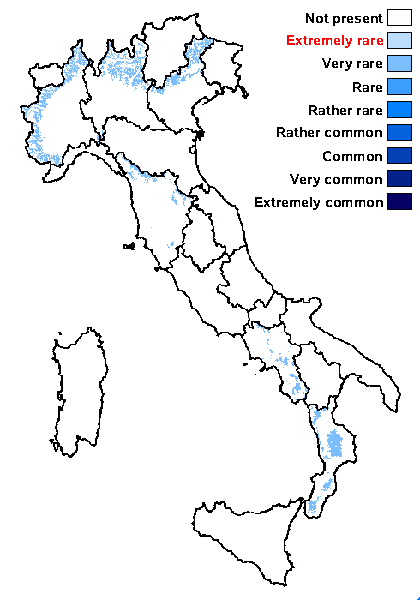
Predictive model
Herbarium samples
Growth form: Crustose
Substrata: bark
Photobiont: green algae other than Trentepohlia
Reproductive strategy: mainly sexual
Pioneer species
Commonnes-rarity: (info)
Alpine belt: absent
Subalpine belt: extremely rare
Oromediterranean belt: absent
Montane belt: very rare
Submediterranean belt: absent
Padanian area: absent
Humid submediterranean belt: absent
Humid mediterranean belt: absent
Dry mediterranean belt: absent

Predictive model
| Herbarium samples |
 Index Fungorum
Index Fungorum
 GBIF
GBIF
